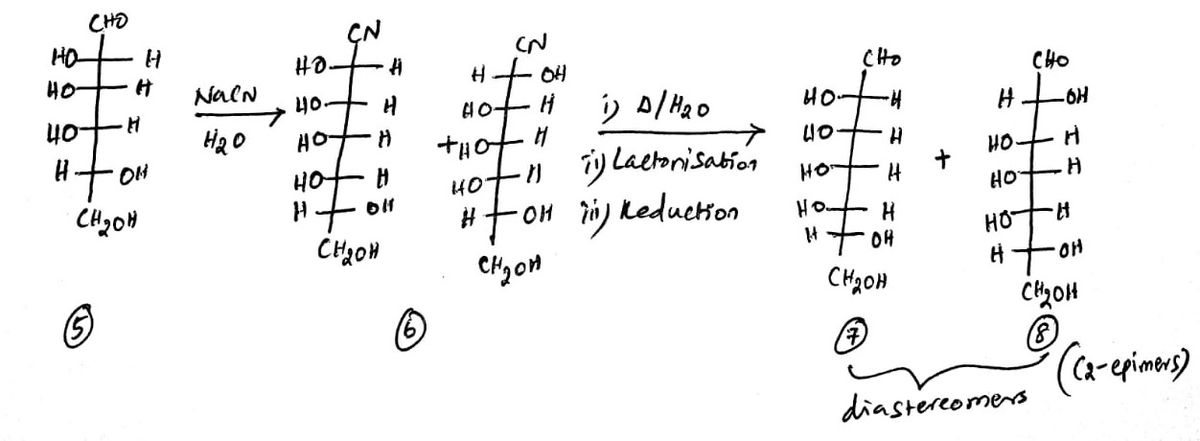Carbohydrates
Carbohydrates are the organic compounds that are obtained in foods and living matters in the shape of sugars, cellulose, and starch. The general formula of carbohydrates is Cn(H2O)2. The ratio of H and O present in carbohydrates is identical to water.
Starch
Starch is a polysaccharide carbohydrate that belongs to the category of polysaccharide carbohydrates.
Mutarotation
The rotation of a particular structure of the chiral compound because of the epimerization is called mutarotation. It is the repercussion of the ring chain tautomerism. In terms of glucose, this can be defined as the modification in the equilibrium of the α- and β- glucose anomers upon its dissolution in the solvent water. This process is usually seen in the chemistry of carbohydrates.
L Sugar
A chemical compound that is represented with a molecular formula C6H12O6 is called L-(-) sugar. At the carbon’s 5th position, the hydroxyl group is placed to the compound’s left and therefore the sugar is represented as L(-)-sugar. It is capable of rotating the polarized light’s plane in the direction anticlockwise. L isomers are one of the 2 isomers formed by the configurational stereochemistry of the carbohydrates.
What products are formed when each compound undergoes a Kiliani– Fischer synthesis?

The chemical method to synthesize the monosaccharides with an increase in the carbon content as compared with the reactant monosaccharide and also keeping the stereochemical feature of all other carbon remains the same is termed as the Kiliani-Fischer synthesis. In this method, the two new products are formed from the single reactant monosaccharide. Since the two stereoisomers obtained differ only at C2 carbon, they are termed as the C2-epimers. The absence of the mirror image relationship between the two product stereoisomers is termed as the diastereomers.
The general scheme of the synthesis involves cyanation, hydrolysis, lactonization, and reduction. The nucleophilic addition reaction of D-lyxose (1) with NaCN in water produces cyanohydrin 2. Since the two different addition pathway is possible, two different cyanohydrin products are obtained (2). The hydrolysis of the cyanohydrin produces the carboxylic acid and it undergoes an intra-molecular lactonization reaction followed by the reduction to furnish the diastereomers 3 (D-Talose) and 4 (D-Galactose).

Similarly, the cyanation of D-talose 5 yields two diastereomeric cyanation intermediate (6) due to the difference in the addition of the nucleophile. The cyanohydrin intermediate hydrolysis, lactonization, and reduction produce the two diastereomers 7 and 8. Since the two diastereomers differ only at the C2 position of the carbon chain, it is termed as the C2-epimers.

Step by step
Solved in 3 steps with 2 images









